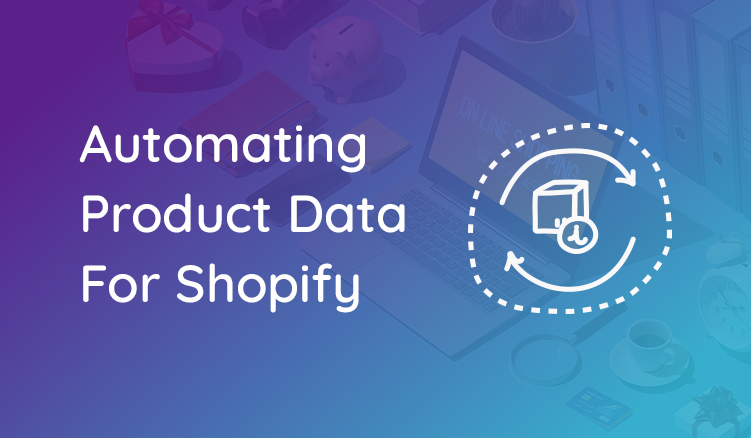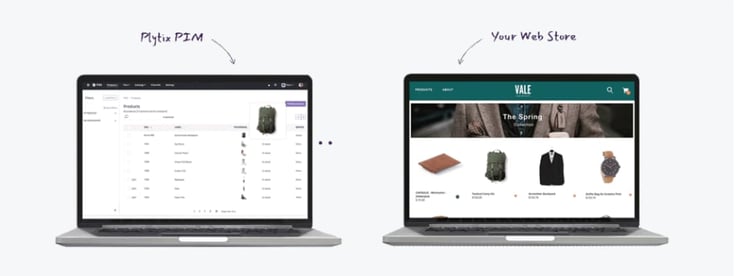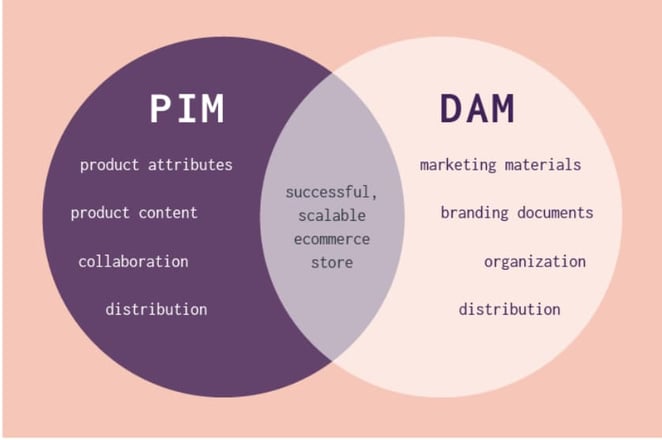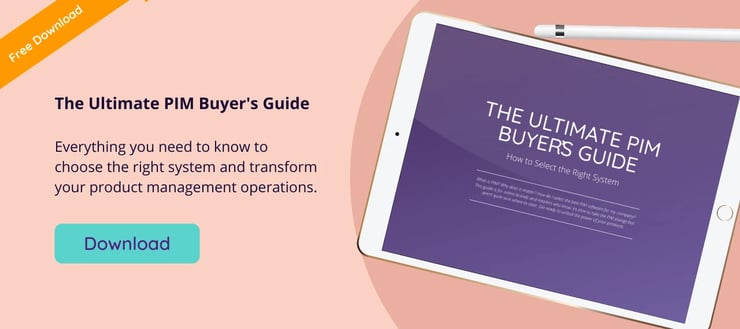
Keep the good stuff coming
Subscribe to our blog newsletter and get monthly content that helps you manage product data smarter.
No spam. Just real value.
At some point, managing your data for Shopify in spreadsheets will drive you nuts. It’s a reality, much like any other labor-intensive task that involves data. It gets old.
Automating ecommerce product information in PIM software has proven to reduce time to market by up to 400% and increase sales by up to 50%.
Imagine that, the information you’re so used to manually managing can be processed in a Product Information Management (PIM) system with ease!
How to get started?
If you’re reading this, it’s clear that manual data entry is just not working for you anymore. So, in this blog post, we’ll teach you how to start automating your information for Shopify with PIM. You’ll also learn how a PIM tool, like Plytix, can help streamline processes and improve the quality of your ecommerce content.
Step 1: Ditch spreadsheets for data management
Truth be told, you’ll never sell on multiple channels while you’re still managing your product data in spreadsheets. It’s a big mistake ecommerce or product managers make—and it’s wasting precious time on repetitive tasks that can be automated. Not to mention, using spreadsheets as a master database can limit a marketing and sales team’s potential (and product content, more importantly).
This all-purpose tool was not designed to manage large volumes of text and visual assets in a number of different formats. A PIM was. By just using spreadsheets, you’re more prone to human error, data silos, and miscommunication.

It is advised that you upload all the existing product information you have from your spreadsheet collection into a PIM system. Once all your information has been centralized, you can start enriching your data to suit Shopify’s content requirements. Thereafter, depending on the tool you use, you can set up auto-match attributes that automate new data and shares it directly with your Shopify store. Any data that is updated in your PIM will automatically feed through to your web store. The same process can be replicated for sales channels and feeds.
Step 2: Bring all your data sources together under one roof
When you work with scattered data, you’re slowing down data management. Rather invest in technology that will give your content a competitive edge.
A centralized approach to Product Information Management is key to speeding up your time to market, as everything is neatly stored in one accessible location. By connecting a PIM tool to your ERP system, you can connect basic product information (identity SKU, or GTIN, price, etc.) you already have on inventory, and enrich it for marketing purposes. By this, we mean leveraging the variety of content fields available in PIM to help improve content quality without limitations.
In addition, some next-generation PIMs even have digital asset management (DAM) capabilities, so you’ll be able to refrain from using Dropbox, the cloud, or a dedicated DAM solution as your main storage source for visual assets. This way, all your content, and images will live together. When your content lives together in a single source of truth, it enhances team collaboration and improves productivity.

Step 3: Format your product content for maximum results
Shopify’s basic content requirements include the following:
- Title and description
- Product type and handle
- Product ID (SKU or barcode)
- Pricing information
- Product media and enrichment
- Availability of the product
- Variants of the product
- Inventory tracking
- Shipping (weight, size, and volume)
- Variants of the same product
- Vendor of the product
- Collections (or categories of products)
- Tags (searchable keywords)
At a bare minimum, you will need to match these requirements no matter the tool you choose to use for automation or how you wish to manage the information for your web store. However, as you know, this information alone won’t drive sales.
By using Plytix PIM, for instance, you can enrich the content you already have, optimize it for search engines and track the performance of each product in an analytics tool. The beauty of centralizing your ecommerce product information is setting up an automated process for a specific profile. You can Shopify PIM integration, and any changes that you make thereafter can be automatically sent to your Shopify account periodically or as often as you wish to schedule it.
Step 4: Set your own quality standards for consistency
Some catalog management tools offer a quality control feature. (Just like a respective sales channel might have for your content, you can use the same feature for your Shopify web store.) This helpful feature will ensure that you provide your customers with the most detailed information needed to make a purchase.
In Plytix, you can set up a completeness attribute. This is a measurement feature that helps you analyze the standard each product should meet. As you work to achieve it, the system will provide you with an up-to-date status. If your content matches the attribute workflow you’ve set up, you can check to see which products are 100% enriched and ready for Shopify. If not, Plytix will detect incomplete or inconsistent content and prevent you from sharing it with your store.
Step 5: Start pushing content from Shopify to … everywhere
If you’ve been manually managing your product information for months (or years), the chances of you branching out to new channels is slim. We don’t blame you—who has the time to format each sheet for a new channel when you can hardly format it for one web store? This is just one situation affecting your store’s future.
Ecommerce continues to change, but there are technologies that make it easier to keep up and compete against the leaders in your industry. From multichannel commerce to cross-border selling, multilingual web stores, and more, your growth scope is endless. But it all starts with rich, automated product information.
Let Plytix PIM pick up the slack
Shopify businesses have been flocking to Plytix to help automate data. Our affordable PIM solution has been a real game-changer for teams with complex data wanting to sell everywhere and improve customer experiences. As a result, we’ve seen that PIM adopters have improved sales, operating margins, market reach, and customer satisfaction in just two years. Crazy, huh? Well, what are you waiting for? Get started now. Try our FREE PIM for Shopify—no strings attached.

What if your product data actually worked for you?
We’ll show you how Plytix helps you stop fixing data—and start using it.
Related posts
Keep the good stuff coming
Subscribe to our blog newsletter and get monthly content that helps you manage product data smarter.
No spam. Just real value.






Think others should see this?
Go ahead and share it.